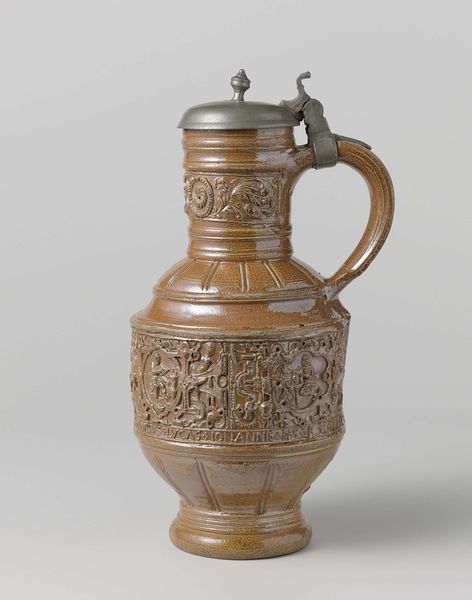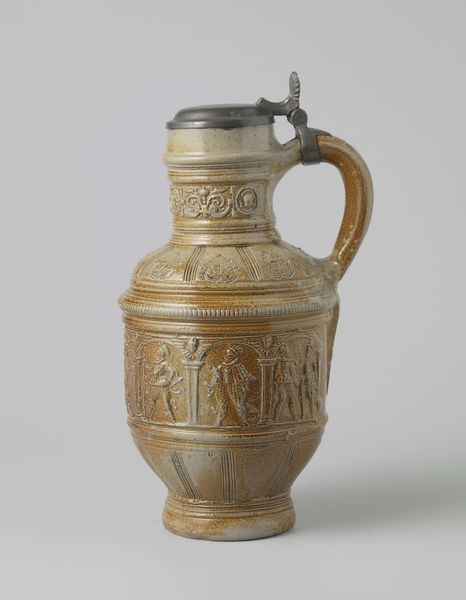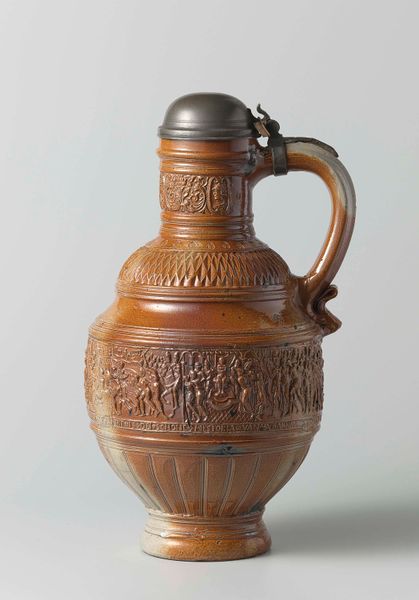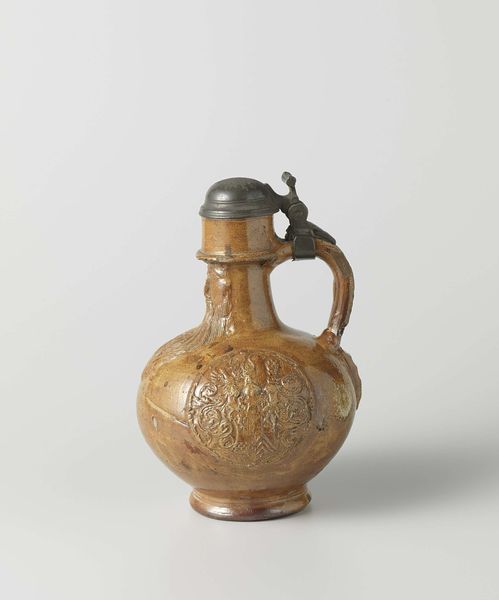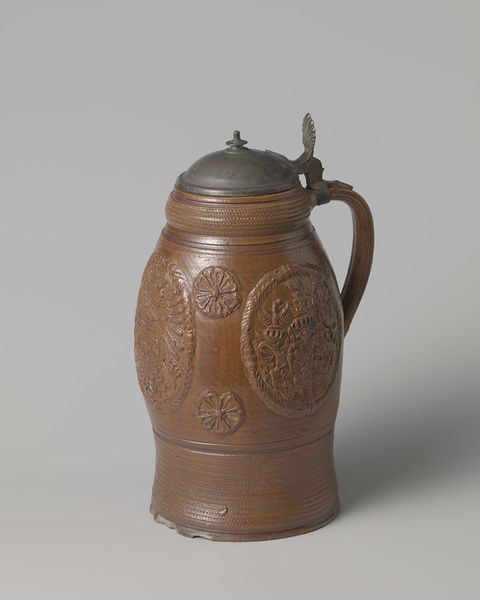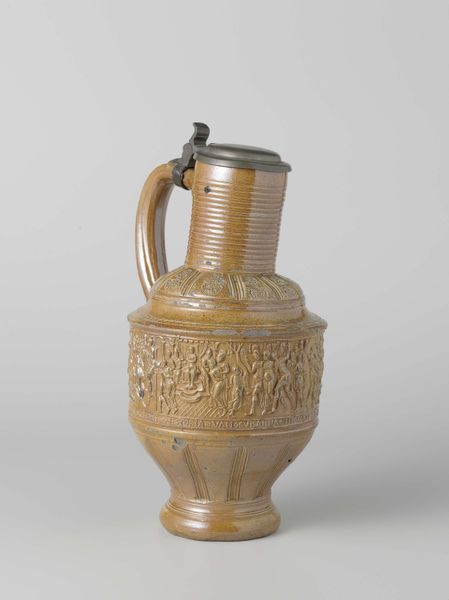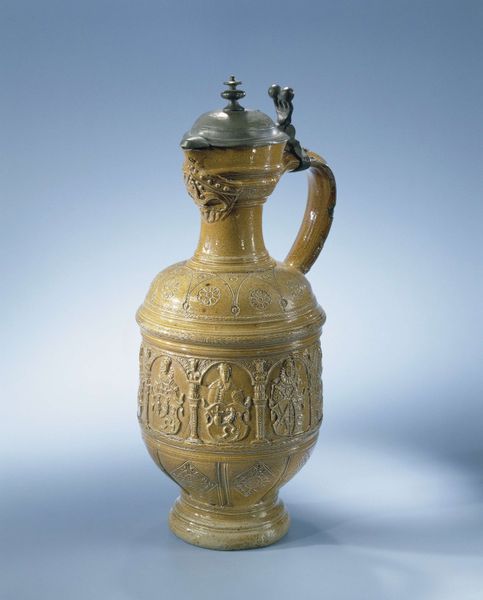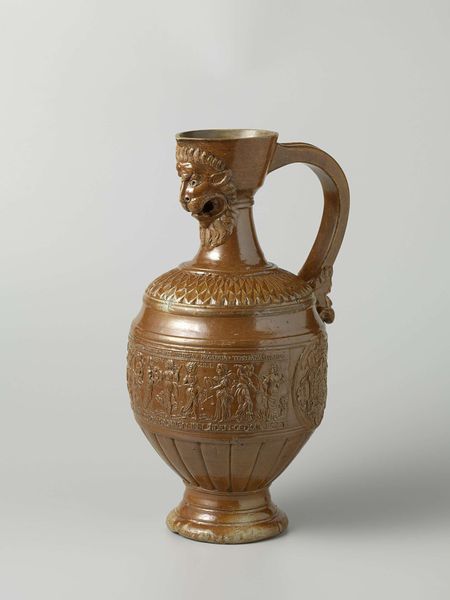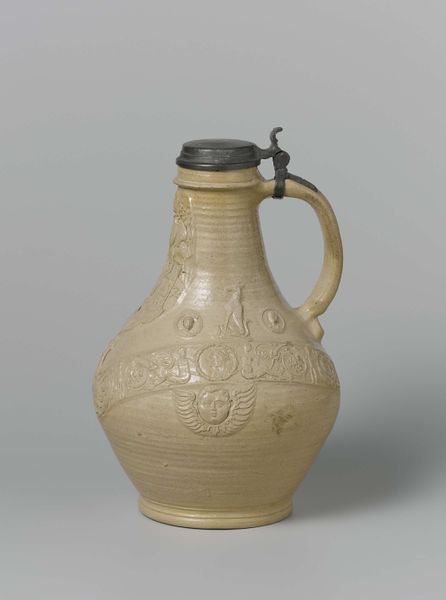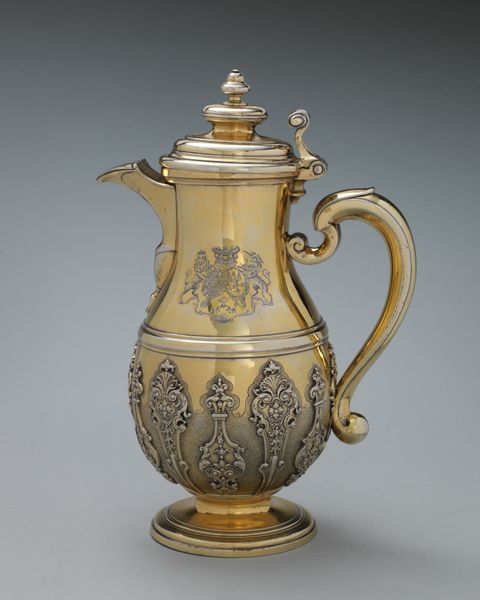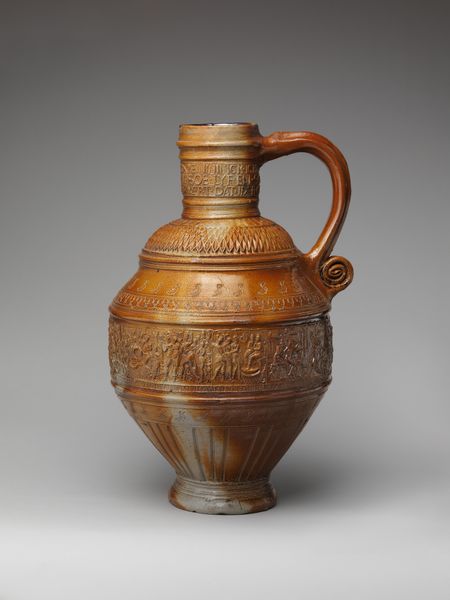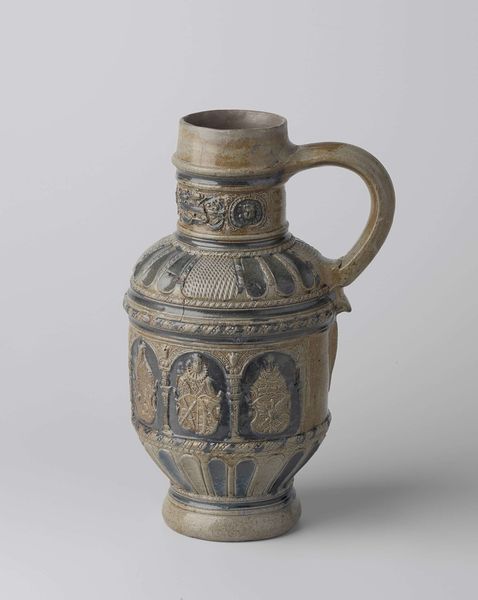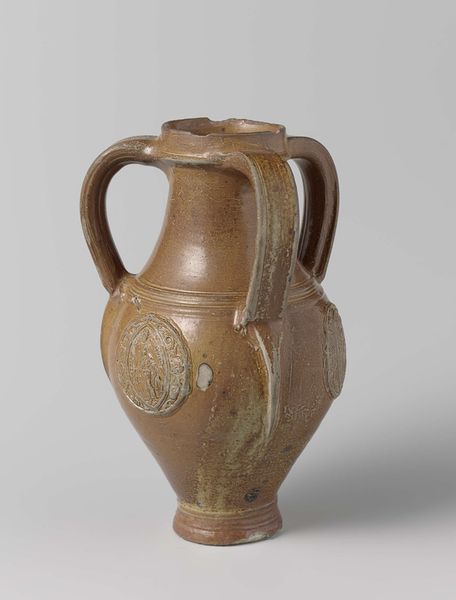
ceramic
#
medieval
#
ceramic
#
stoneware
#
ceramic
#
decorative-art
Copyright: Rijks Museum: Open Domain
Curator: Here we have an intriguing example of late 16th-century stoneware, specifically a jug attributed to Jan Baldems Mennicken, crafted in 1599. Note the elaborate ornamentation – coats of arms mingle with depictions of a pelican and griffins. Editor: It looks rather serious for something meant to hold liquids. There’s a formality about the thing…it's like a pronouncement instead of just, well, a jug. Almost…regal. Curator: That "regal" quality stems from the symbolism meticulously etched onto the stoneware. Coats of arms, of course, signal status and lineage. But beyond mere heraldry, consider the bestiary. Editor: The what-now? Bestiary? Curator: It's like an illustrated encyclopedia of animals, real and mythical, each imbued with symbolic weight. The pelican, for example, often represents piety and sacrifice, feeding its young with its own blood in some traditions. The griffin, vigilance and strength. These aren’t casual choices. Editor: So, this isn't just showing off some family crest. It's like broadcasting values or principles? Public service announcement via pottery? Curator: Precisely. It speaks to a culture where visual symbols served as a potent language. Each emblem communicates ideals, aspirations. Editor: The sheer detail, all pressed into clay... that's wild. And it's not a gentle scene. More like powerful forces interacting. Not exactly light refreshment vibes. More like… a declaration. Curator: Absolutely. Its intended function serves as secondary. The jug becomes a canvas for propagating dynastic image and ideals through symbolically loaded iconography. This fusion transcends utility. Editor: I keep picturing the people who commissioned and used it, though… sitting around a table. You’re sharing the wine and declaring allegiance to family symbols, a past ideal? Seems heavy, that kind of constant performance of belonging. Curator: It reinforces communal and ancestral identities within a context where such affirmations were crucial for maintaining societal coherence. Now when one examines the jug… Editor: Hmm. This chat makes me appreciate even utilitarian objects contain cultural statements that speak to the people, eras and intentions of where they come from, just begging for attention. I hadn’t really expected that today! Curator: Indeed. Material objects often offer such unexpectedly eloquent testimony regarding cultural values if we care to understand their silent vocabulary.
Comments
No comments
Be the first to comment and join the conversation on the ultimate creative platform.
